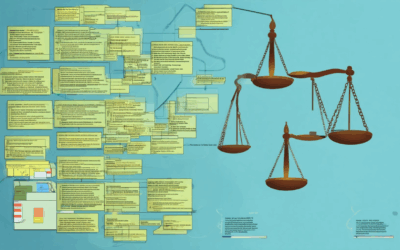Managing risks is a critical aspect for nonprofit organizations (NPOs) aiming to achieve their mission objectives while safeguarding their reputation, finances, and programmatic success. Risk mitigation for NPOs involves identifying potential threats, whether operational, financial, or relational, and implementing strategies to minimize their impact. By adopting effective risk management practices, nonprofits can ensure continuity, foster stakeholder confidence, and sustain their community impact. This comprehensive guide explores key frameworks, strategies, and approaches tailored to the unique challenges faced by NPOs, offering actionable insights to enhance organizational resilience and operational efficiency.
Key Takeaways
- The 4 Ps of Risk Assessment—Predict, Prevent, Prepare, and Protect—guide effective hazard management, ensuring safety and operational continuity.
- Culture, Competence, Control, and Communication are the 4 Cs of Risk Management, fostering resilience and alignment in nonprofit operations.
- The 5 Ps of Risk Management—People, Principles, Processes, Practices, and Perceptions—offer a holistic approach, enabling nonprofits to navigate uncertainties effectively.

Four Risk Treatment Mitigation Methods
Risk treatment mitigation involves strategies to identify, assess, and manage potential threats to achieve organizational goals. Here are four effective methods:
- Tolerate : Accept certain risks that pose minimal threat to operations, especially when the cost of mitigation exceeds the potential harm. This approach requires careful assessment to ensure risks remain manageable.
- Terminate : Eliminate high-risk activities or projects that could lead to significant consequences. This may involve stopping operations or divesting from non-core activities to minimize exposure.
- Treat : Implement controls or measures to reduce the likelihood or impact of identified risks. Treatments can include policies, procedures, or technologies designed to counteract potential issues.
- Transfer : Delegate risk management responsibilities to third parties, such as contractors or external providers, reducing internal liability while still addressing potential threats.
By employing these methods, organizations can systematically address risks, ensuring resilience and continuity in achieving their objectives.
Examples of Risk Mitigation
Risk mitigation is a proactive approach to identify potential threats and implement strategies to minimize or eliminate their impact. Here are some common examples:
- Risk Transfer :
- Organizations often transfer risks to third parties, such as purchasing insurance to cover liabilities like property damage or legal disputes.
- Example: A company buys insurance to protect against losses caused by natural disasters, ensuring they can recover financially.
- Risk Acceptance :
- Sometimes, certain risks are deemed acceptable based on their likelihood and potential impact.
- Example: A construction company may accept the risk of minor delays due to weather conditions, as the impact on projects is usually manageable.
- Risk Avoidance :
- Avoiding risky situations altogether is another form of mitigation.
- Example: A charity avoids opening a new office in a high-crime area by relocating to a safer location.
- Monitoring and Control :
- Implementing systems to monitor risks and take corrective actions can significantly reduce their effects.
- Example: A hospital installs surveillance cameras and access controls to prevent unauthorized entry and theft.
By combining these strategies, organizations can create a robust risk mitigation plan tailored to their specific needs.

What Are the 5 T’s of Risk Management?
Understanding the 5 T’s of risk management is fundamental for effectively mitigating risks in any organization. These principles provide a structured approach to managing potential threats and challenges.
Here are the five key components of effective risk management:
- Transfer
- Risk transfer involves offloading responsibilities or liabilities onto third parties. This could mean purchasing insurance, outsourcing services, or delegating tasks to external experts. By transferring risks, organizations can reduce their exposure to potential issues.
-
Tolerate
- Accepting certain levels of risk is often necessary for growth and innovation. Organizations should identify acceptable levels of risk and establish protocols for managing situations that fall within these limits.
-
Treat
- Treating risks involves implementing measures to eliminate or minimize potential threats. This could involve developing safety protocols, conducting regular audits, or investing in technologies that reduce vulnerabilities.
-
Terminate
- In some cases, the best course of action is to disengage from high-risk activities or relationships. Organizations should evaluate whether continuing certain operations is feasible or advisable.
-
Take Opportunity
- Recognizing opportunities to manage risks proactively can lead to better decision-making. Identifying potential risks early allows organizations to address issues before they escalate.
By applying these principles, organizations can create a robust framework for managing risks effectively. For more insights into risk management strategies, explore our comprehensive guides on risk management strategies and learn how to identify and mitigate common risks faced by nonprofits.

The 4 Ps of Risk Assessment
The 4 Ps of risk assessment—Predict, Prevent, Prepare, and Protect—are fundamental principles used to manage and mitigate potential hazards in various industries. These steps ensure safety, operational continuity, and environmental responsibility.
- Predict : Identify potential risks before they occur. This involves analyzing historical data, industry trends, and external factors to anticipate threats.
- Prevent : Implement measures to eliminate or reduce the likelihood of identified risks. This includes designing systems, protocols, and policies to minimize hazards.
- Prepare : Develop contingency plans and response strategies to address risks that cannot be prevented. This ensures readiness for unexpected events.
- Protect : Safeguard people, assets, and the environment by applying protective measures and training stakeholders to handle emergencies effectively.
These steps collectively form a proactive approach to risk management, helping organizations navigate high-risk environments responsibly.
What Are the 4 Cs of Risk Management?
The 4 Cs of risk management are essential principles that guide effective risk management practices. These components work together to minimize threats and maximize opportunities while ensuring organizational resilience.
- Culture
- Culture refers to the organizational environment and mindset that values risk awareness and proactive decision-making.
- A strong culture fosters open communication and encourages employees at all levels to identify and report risks.
- It ensures that risk management is embedded into daily operations and aligned with overarching goals.
-
Competence
- Competence involves having the right skills, knowledge, and expertise to assess and manage risks effectively.
- This includes staying informed about regulatory requirements, industry standards, and emerging threats.
- Organizations should invest in training programs and hire professionals with proven risk management capabilities.
-
Control
- Control measures are systems and processes implemented to monitor, mitigate, and respond to identified risks.
- These could include policies, procedures, and tools that help organizations predict and manage potential threats.
- Regular audits and reviews ensure that controls remain effective and adapt to changing circumstances.
-
Communication
- Effective communication is critical for sharing information across all levels of the organization and external stakeholders.
- Transparent dialogue helps identify risks early and prevents misunderstandings or conflicts.
- Clear communication channels ensure that everyone understands their role in managing risks and the implications of decisions.
By focusing on these four core components, organizations can develop a robust risk management strategy that drives success while safeguarding against potential challenges. For more insights into refining your risk management approach, explore our comprehensive guides on risk management strategies and cultural resilience .

Understanding the 5 Ps of Risk Management
Risk management is a critical aspect of organizational success, particularly in non-profits and project-oriented environments. Below is a breakdown of the five key components, often referred to as the “5 Ps” of risk management:
- People : Effective risk management begins with the right people in place. This includes leaders who understand their role in oversight, employees trained in risk protocols, and stakeholders who are engaged in the process. A cohesive team ensures alignment and accountability.
- Principles : Core principles like transparency, accountability, and ethical considerations guide decision-making. These principles help organizations navigate complex scenarios while maintaining public trust.
- Processes : Robust processes are essential for identifying, assessing, and mitigating risks. This involves systematic approaches such as SWOT analysis, scenario planning, and contingency strategy development.
- Practices : Ongoing practices like regular audits, scenario analysis, and continuous improvement ensure that risk management remains proactive rather than reactive. Staying informed about regulatory changes and industry trends is also crucial.
- Perceptions : How an organization views risk can significantly influence outcomes. Shifting from a traditional “avoidance” mindset to seeing risk as an opportunity for innovation and growth fosters resilience and adaptability.
The integration of these elements creates a holistic approach to risk management, enabling organizations to anticipate challenges, mitigate impacts, and thrive despite uncertainties. By focusing on the “5 Ps,” non-profits can better navigate risks while delivering impactful results to their communities.
For more insights into refining your risk management strategies, visit our NPO Expert resource hub, where we provide tailored guides and tools for nonprofit leaders.





0 Comments